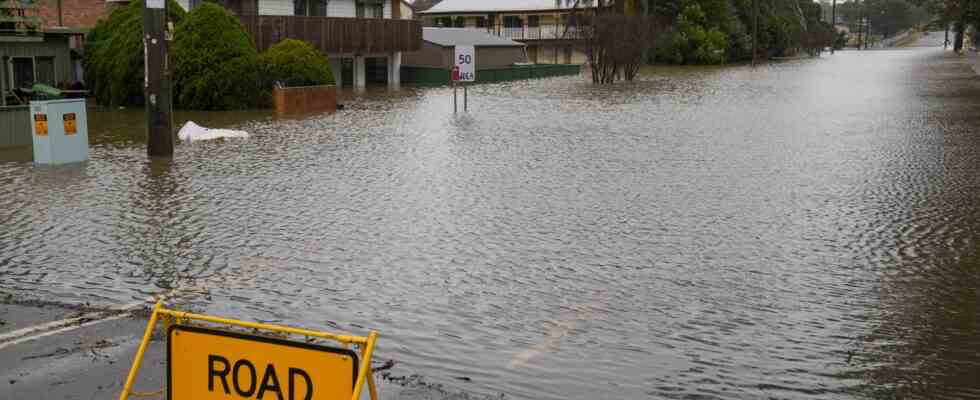Status: 05.07.2022 08:56 a.m
The flood areas in Australia record as much rain as usual in London in a year – within four days. The state of disaster applies to New South Wales, tens of thousands of people are fleeing.
Australia’s government has declared the severe flooding of the past few days in the most populous state of New South Wales a natural disaster. Emergency funds for the affected areas on the east coast should be released more quickly.
The greater Sydney area is particularly affected, where massive amounts of rain have fallen since Friday. Meteorologists calculated that more precipitation fell there within four days than in London in a whole year.
As the broadcaster ABC reports, there is currently an evacuation order for 50,000 people. A corresponding order for 32,000 people was issued on Monday. Hundreds of residents have asked for help. The emergency services moved out again and again to pump out houses and save people.
departure as a consequence
Almost 20,000 households were without electricity, entire areas were under meters of water. Drivers trapped on flooded streets were freed, people were taken out of houses standing under water. According to the authorities, the situation is particularly dramatic along the Hawkesbury and Nepean rivers in northern Sydney and in the western outskirts.
In March, there were devastating floods in Sydney and large parts of New South Wales and Queensland. Parts of the metropolis with around five million inhabitants are now struggling with the fourth flood situation within 16 months. Many people fear for their existence again and again. Media quoted a man whose home in the Lansvale suburb was hit twice by flash floods in the last 48 hours:
we will sell We can’t go through this again.
impact of the climate crisis
A low-pressure area between Australia’s east coast and the North Island of New Zealand is responsible for the rain masses. It drives humid air and heavy waves onto the New South Wales coast. “Because of previous above-average rainfall in summer and parts of autumn, this rain falls on wet soils and full water reservoirs,” climate expert Mark Howden of the Australian National University wrote in the Sydney Morning Herald. As a result, the rivers swell at lightning speed and overflow their banks.
Howden warned that such extreme weather events will become more frequent in the future “if we don’t act now”. A clear plan is needed quickly to combat the effects of global warming. Because Australia is particularly suffering from the consequences of climate change – heat waves, bush fires and floods on an ever greater scale and at ever shorter intervals are the result.
No all-clear yet
Prime Minister Anthony Albanese wants to travel to the disaster area as soon as possible. For him, the crisis is the first major test. The head of the laboratory, who has only been in office since May, has made the fight against climate change a central point of his agenda. Among other things, he is planning a new “mega-ministry for climate change, energy, environment and water”. The conservative previous government of coal advocate Scott Morrison, on the other hand, was heavily criticized for its passive climate policy.
Regional Premier Dominic Perrottet urged people to follow the authorities’ instructions. “If there is an evacuation order, please leave your house.” The crisis is “anything but over,” said the politician. “Please do not be complacent wherever you are. Please use caution when driving on our roads. There is a significant risk of flash flooding across our state.”
Heavy rain is also expected in parts of New South Wales for the remainder of the week.

